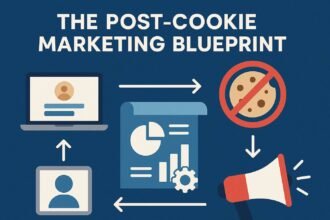Demystifying Hyper-Personalization: Understanding its Essence and Impact
Hyper-personalization or advanced personalization means personalization that makes use of artificial intelligence (AI) technology and real-time data to deliver a more relevant personal customer experience or ad. E-commerce portals are moving away from a static or one-size-fits-all approach to contents during the user session. It is now widely accepted that delivering a personalized experience on e-commerce portals gives a competitive advantage to the business.
A couple of examples of personalization in everyday lives include movie recommendations on Netflix, music playlists created by Spotify, and newsfeed on Facebook. The noticeable thing about these services is that though users share a common service, the movies, songs, or advertisements they are shown are personalized based on their interests and previous interaction with the service.
The Importance of Personalization in Business
Modern businesses are re-engineering their strategies toward customer-centred models. Key among these considerations is the ability to offer a unique customer experience through personalization technologies. By being sensitive to the dynamic needs and preferences of individual customers, companies can adopt specific approaches that demonstrate an understanding of each customer. The ability to collect, analyse and process big data is crucial, as it supports the delivery of personalized products and services to customers in real time.
Customer experience management is a key differentiator for businesses, helping to create an emotional bond between the brand and its customers. Customers who feel that a brand recognises their individual needs tend to retain their relationship with it longer. With an increased focus on customer centricity, companies across industries—from financial services and manufacturing to luxury fashion and travel—are delivering tailored, bespoke offerings almost in real time.
Key Technologies Enabling Hyper-Personalization
Hyper-personalization is a business strategy that applies advanced technologies such as artificial intelligence and real-time analytics to deliver more relevant content, product, and service information to users. Essentially, it can be defined as the immediate delivery of highly personalized and product-specific content to users. The objective is to surpass customer expectations and achieve greater customer satisfaction, thereby fostering customer loyalty and forging stronger customer-business relationships. Implementing hyper-personalization strategies allows businesses to stand out in a highly competitive market by offering customized products that meet individual customer expectations and providing personalized experiences throughout the entire customer journey.
An overview of key enabling technologies shows that AI and machine learning are indispensable for processing, segmenting, and classifying the vast and complex data required for hyper-personalization. Additionally, a robust data source that meets both quality and quantity criteria is essential. These technologies enable the identification of optimal solutions for each customer segment in real time—whether in product classification, design, promotion, shopping experience, or after-sales service—as coordinated strategies are executed precisely when the customer needs them.
Artificial Intelligence and Machine Learning
Hyper-personalization is an advanced form of personalization that uses Artificial Intelligence (AI) and real-time data to deliver the best possible customer experience. By combining data collected about individual customers with AI technologies, such as machine learning and predictive analytics, hyper-personalization enables companies to anticipate customer needs and preferences and tailor their offerings accordingly. Companies can A/B test to provide a better customer experience that is data-driven and customer-centric, distinguishing them in competitive markets and retaining customers for longer periods. Hyper-personalization helps businesses understand their customers’ questions and concerns and provide solutions through customized content, making them stand out from their competitors.
Efficient machine learning or predictive analytics models require large amounts of data to train on. Big data technologies are used to store and process the vast amounts of data produced by businesses and customers alike, facilitating the creation of effective AI models. The data comes from both internal and external sources, collected through surveys, questionnaires, web traffic tracking, social media monitoring, and similar methods. Managing this information involves Customer Relationship Management (CRM) systems or Data Management Platforms. An ongoing management process prepares this data for analysis and ultimately trains machine learning models that predict future customer behavior and recommend appropriate actions. The data management section provides more detail on these processes.
Big Data Analytics
The importance of personalization in fostering customer engagement and business competitiveness is well established, and a hyper-personalized approach can unlock even greater market potential. For example, according to Aberdeen Group research, marketers who excel at personalization generate, on average, 40% more revenue than the average. Key technologies that make the hyper-personalized approach possible include artificial intelligence, machine learning, big data analytics, customer relationship management systems, predictive analytics tools, and data management platforms. Equally important is the role of data itself, which can be garnered through surveys, web tracking, and social media listening, and then analyzed through segmentation strategies that group customers by demographic, behavioral, or psychographic traits.
Big data serves as the fuel for a hyper-personalization engine that requires vast and varied information from across the web. For example, the luxury travel sector leverages big data to meet the exacting standards of premium travelers. Automated tools can share a traveler’s preferences with concierge services, airlines, and hotels. These platforms analyze previous activities, geography, expressed preferences, and real-time contextual signals to make targeted, relevant suggestions. Through its advanced analysis capabilities, big data enables a deeper understanding of customers and serves as a support function for leadership roles within any customer-focused enterprise.
Customer Relationship Management Systems
The foundational step in the hyper-personalization journey is building a data bank of customer information. Data Collection involves gathering customer data using methods such as surveys, Web Analytics, Social Media Monitoring, and Third-party Tools. Additional techniques for data collection are covered separately. Given the diverse sources of customer data, employing a Data Management Platform is beneficial for integration, harmonization, and optimization. Once the data is integrated and organized, it is stored in the Customer Relationship Management system. Customer Relationship Management forms the cornerstone of hyper-personalization because it serves as the central repository for all customer-related information and yields predictive insights crucial for personalization.
Customer Relationship Management is the effective management of a company’s interactions with current and potential customers. This entails using data analysis about customers’ history with the company to enhance business relationships, focusing on customer retention and ultimately driving sales growth. The goal of a Customer Relationship Management system is to compile comprehensive customer data across different channels—or points of contact between the customer and the company—including the website, telephone, live chat, direct mail, marketing materials, and social media. Customer service representatives can then access this information to tailor communications and improve customer experiences.
Predictive Analytics Tools
Hyper-personalization equips companies with a competitive advantage by enabling them to deliver individualized products and services that meet the specific needs of each customer in real time. Advanced technologies such as big data analytics, customer relationship management (CRM) systems, predictive analytics, data management platforms (DMPs), and artificial intelligence digital assistants, all supported by data from online surveys, behavioral targeting, web tracking, social media monitoring, and market research, empower the real-time creation of fresh data insights. The collection of detailed demographic, behavioral, and psychographic data supports targeted segmentation approaches capable of generating predictive data about prospective customers; predictive analytics likewise predict customers’ next actions. These datasets can be queried using artificial intelligence or machine learning systems to produce individualized marketing campaigns incorporating personalized product offers and pricing, targeted product recommendations, customized travel packages, and dynamic website content.
Predictive analytics is a form of advanced analytics that employs data modeling, machine learning, and artificial intelligence techniques to facilitate future business decisions. Tools capable of sifting through large datasets are crucial; for example, market basket analysis detects which products are frequently purchased together, while click stream analysis examines companies’ websites to assess browsing behavior. Other techniques focus on buying habits to produce Intelligent Product Recommendations that anticipate customers’ next purchases. Customers’ historical spending patterns can be grouped based on the average amount spent per transaction and most recent purchase, enabling targeted discounts or customized newsletters that reflect each customer’s lifestyle and preferences. Moreover, forecasting algorithms, such as the single exponential moving average, determine the future impact of events on distinct customer segments represented by busy, regular, and dormant shoppers.
Data Management Platforms
Data management platforms (DMPs) play a crucial role in delivering hyper-personalized digital experiences. They collect and manage data from first-, second-, and third-party sources, enabling marketers to gain a unified view of their customers. This consolidated information—encompassing purchase history, demographics, past interactions, and interests—is essential for marketing automation and customer relationship management (CRM).
DMPs are indispensable in highly competitive sectors such as travel, distribution, e-commerce, and retail. They gather and organize web analytics, commercial, and transactional data to facilitate hyper-targeted marketing initiatives. Ultimately, these platforms help identify the most suitable products or services for individual customers.
Data Collection Methods
Several data collection and analysis methods underpin the use of data in hyper-personalization and enable customer data collection and analysis for making a company more customer-centric. They include surveys and interviews, web analytics, product usage analytics, social media monitoring and analysis, and third-party data providers. Surveys and interviews, known as primary data collection methods, enable direct solicitation of customer feedback, preferences, and opinions. Web analytics reveal how users engage with websites, where they spend time or abandon the process. Product usage analytics provide insights through the actual usage of the product or service, establishing patterns of customers’ behaviour. Social media monitoring and analysis determine customer perceptions and responses to a business, its products or the services it offers. Three categories of third-party data providers exist. First-party data is collected by the company’s business itself, second-party data is obtained from a trusted partner, and third-party data is collected, packaged and sold by a business without a direct relationship with the end customer.
Data collected from all customer-facing systems, social listening tools, customer behaviour tools and third-party data providers is consolidated in a Data Management Platform (DMP). A DMP is a unified data warehouse where businesses can match different data sets to gain deeper insights into their customer base. These insights can then be used to create targeted, tailored marketing campaigns that speak directly to the needs of the customers. With a wealth of information regarding customers’ age, occupation, sex, type of cuisine they prefer or if they have a history of allergen consumption, companies can create a more fine-tuned hyper-personalization strategy.
Surveys and Feedback Forms
As one of the oldest data collection techniques, surveys and feedback forms have been greatly enhanced by digital technology. They offer a direct and cost-effective way to gather extensive information from large groups of existing and potential customers. By framing questions carefully, businesses can extract focused demographic, psychographic, and behavioral data, providing insights into customer preferences, experiences, and expectations. This approach is fundamental for guiding customer segmentation into small, manageable groups with shared interests.
Surveys can explore specific aspects of customer behavior, gauge new product demand, uncover existing needs, assess satisfaction with current products or services, solicit online gaming experiences, and gauge the environmental conscience of the target audience. Although they represent a traditional data collection method, surveys provide valuable, targeted insights that complement data accumulated from digital channels when applied judiciously.
Web Tracking and Analytics
Web tracking and analytics represent a powerful data gathering combination, providing sources of valuable customer information across multiple touchpoints. Google Analytics is the market-leading analytics technology, gathering clickstream information and other usage data, enabling a website to better understand its users and optimize the digital experience. The popularity of Google Analytics stems largely from its no-cost adoption in a vast number of websites globally. In addition to the standard clickstream information, it is possible to roll Google Analytics into a personalization ecosystem by sending data into other components or by retrieving data from the platform to deliver personalized website experiences.
The tracking side of web tracking and analytics includes tools and techniques for collecting customer-centric data, which then can be integrated into other hyper-personalization technology solutions. Several techniques, such as e-mail surveys, telephone interviews, and focus groups, aim to collect respondent thoughts, feelings, preferences, and perceptions. Social media monitoring is another powerful approach, where digital footprints such as brand and product impressions and sentiments can be both tracked and analyzed. Given its significance, social media research and monitoring enjoy a prominent role in customer data collection. More detailed coverage of customer data collection can be found in that section.
Social Media Monitoring
Monitoring social media platforms is an effective way to collect vast amounts of customer data for personalization purposes, yet few enterprise businesses utilize this valuable asset. By analyzing social media posts and tracking mentions of their brand, products, competitors, markets, or even activities honest customers engage in while using their products, organizations gain valuable insight into their customers’ demographics, motivations, interests, and behavior. Information gleaned from social media monitoring provides the foundation for subsequent steps in the hyper-personalization process, including business intelligence gathering, trend identification, operational planning, and the creation of targeted dynamic marketing and sales campaigns.
Social media monitoring—also known as social media listening or social media analytics—is gaining popularity due to its multifaceted benefits. It enables businesses to enhance sentiment analysis, implement effective newsjacking strategies, perform influencer outreach, conduct media monitoring, offer contextual customer support, track demographics, identify trending topics, monitor brand performance, analyze competitors, and gather business intelligence. Positive feedback propagation and real-time response to individual mentions boost customer satisfaction rates, ultimately leading to increased market share and revenue.
Segmentation Techniques
Company information, customer data analysis, segmentation, behavioral marketing, and product recommendation are essential for companies, regardless of size. They help organise information and understand the data collected and analysed. Moreover, they contribute significantly to achieving hyper-personalization. However, data must be collected beforehand. Several techniques are available for this purpose. Surveys can be employed for collecting data from customers/users, web scrapers can monitor social media, websites, and other sources, and geotracking can provide information related to customer location. After collecting the data, a data management platform is necessary for its profitable organisation. Several platforms can manage customer information and target them, such as Tableau or Google Analytics. Currently, hyper-personalization requires the use of technologies like Artificial Intelligence, Big Data, Customer Relationship Management, Machine Learning, Predictive Analysis, or the Internet of Things.
The analysis of customer behaviour enables companies to provide services better suited to their needs, thereby enhancing their competitiveness in the market. Demographic segmentation divides the population into groups based on parameters such as age, gender, and socioeconomic status. Behavioural segmentation considers more complex aspects, including customer needs, product benefits, motivation, or purchase frequency. Psychographic segmentation classifies customers by interests, activities, and opinions. Implementing such strategies translates into increased customer loyalty and consequently higher company profits—findings corroborated by various researchers worldwide.
Demographic Segmentation
Demographic segmentation is often a good starting point because it is the easiest to take advantage of. Basic demographic criteria are available for virtually every prospect. Segmenting customers according to criteria such as gender, age, income, education, geographic location, race, and nationality can help businesses better understand customer needs and motivations and identify new market opportunities. Audience refinement goes here, using a series of additional demographic categories, such as language preference, religion, culture, or even generational subgroups (e.g., Generation X, Millennial, or Baby Boomer). Clearly, much demographic data can be acquired through traditional direct marketing channels such as surveys, Web tracking, point of sale, apps, social media, and so on. For additional information and examples on data collection, see Data Collection Methods.
Customer segregation based on location is considered an important parameter as customer preferences differ across countries, states, regions, cities, or towns. For example, a customer residing in a hilly region will have a different purchasing pattern compared to at a coastal region. A cold locality will have different purchasing patterns than a hot locality. Seasonal changes such as winter, summer, monsoon, and festivals like Diwali, Christmas, Easter, or Christmas also make a customer’s needs different. Like income levels, physical/psychological/emotional changes also affect customer behavior and can change behavior patterns.
Behavioral Segmentation
Different customers have various key motivations and needs driving their spending habits. Business organizations classify customers by their buying behavior, such as by the occasions when they make purchases, benefits sought, loyalty status, the usage rate of a product, customer readiness to purchase, and attitude towards the product. Behavioral characteristics are more closely related to the desired outcome—greater customer conversion percentage, clustered customer experiences, and customized marketing campaigns. Customers can also be segmented based on their life-cycle stage, such as during awareness generation, consideration, purchase, and feedback and retention. Car companies, for example, may segment their target market as first-time buyers and non-first-time buyers to accommodate specific market needs. Following the initial classification, customers can be further divided into an unlimited number of groups that enable engagement through tailored brand messages at each stage of the journey.
Businesses need to understand the features that motivate individuals’ spending habits. Education and income are imperfect substitutes for these variables, which are created from different motivations such as status, practicality, knowledge, and trust.
Psychographic Segmentation
Psychographic segmentation divides an audience into groups according to their interests, activities, and opinions—encompassing such dimensions as lifestyles; shared values, needs, or desires; attitudes about politics or society; and communication styles or consumption preferences. The goal is to deepen understanding of habits and consumption patterns and to reveal the emotional and personal connections that people want to develop, in order to ensure that messages truly match their recipients’ values and worldviews. Psychographic segmentation can be used to craft a distinctive brand identity or identity segments for products and services.
Fundamental to compelling personalization, psychographic information reveals what makes customers feel happy, secure, or successful, grouping them accordingly and revealing the emotional business case for the product or service. Emotions drive engagement, appreciation of support, feelings of connection, visits, purchases, interactions, and loyalty—psyche-based clues suggest how to help people feel happy, secure, and successful.
Personalization Strategies
Although personalization relies on technology, it is ultimately a customer-centric approach within a product- or service-based organization. Accordingly, companies use all available data in several ways to deliver a personalized customer experience. Dynamic Web Content Delivery dynamically assesses a customer’s preferences and behaviors and delivers page content accordingly. Customized Marketing Campaigns use targeting logic to send tailored messaging optimized for response and conversion. Product Recommendations match the right customer with the right product.
Addressing customers’ needs individually is the foundation of hyper-personalization. Personalization transforms the e-commerce industry, increasing customer satisfaction, improving marketing return on investment, and generating repeat sales and recommendations. Customers expect both relevance and personalization when shopping.
Dynamic Content Delivery
Delivering dynamic content on websites enables the display of specialized, individualized content to customers or visitors rather than generic information. By adopting a dynamic content management approach, businesses can create personalized digital experiences that address visitor needs and preferences.
As a content-management strategy, dynamic content management entails formulating and distributing content tailored to specific groups based on their interests, affiliations, or characteristics. Although dynamic content necessitates more resources and entails greater labor compared to static updates, it offers considerable advantages for theoretically any visitor, visitor group, or even a single, pre-identified individual. Compared with typical static website content, the specific benefits of dynamic content include greater relevance, higher interest levels, potentially increased conversions, and a more compelling user experience, all of which contribute to enhanced visitor satisfaction.
Customized Marketing Campaigns
Organizations understand that human beings have their own specific needs, and likewise they have their own specific wants. Therefore, organizations have developed the ability to customize the marketing campaign messages and marketing campaign offers for every individual customer. Customized marketing campaigns allow the organization to deliver a more personalized customer experience by curating the content of the marketing message for every individual customer. Another area where organizations can customize, or hyper-personalize, customer experience, is by offering individualized offers. For example, Expedia can provide customers with special hotel discounts, and Groupon can offer their customers unique flight tickets. Both are being generated through machine learning, where a dynamic algorithm is created for each individual customer.
While data automation and data management platforms are critical to hyper-personalization, a number of other methods can be implemented to enhance the entire marketing campaign process, such as hyper-personalization automation, campaign trend analysis, and sentiment analysis. In addition to assisting in audience targeting, these methods help organizations develop the right marketing strategies both internally and externally—thereby helping to address critical challenges by keeping the brand top of mind and maximizing return on investment during this historic economic period.
Product Recommendations
One of the most common implementations of hyper-personalization is product recommendations. Recommendation engines analyze customer attributes, such as budget, preferred clothing style, size, and color preferences, and offer suggestions for products that fit these criteria. These engines can also leverage data from social media platforms or shoppers’ past purchases to generate recommendations. For example, a shopper who has purchased hiking boots, water bottles, and energy bars may later receive promotions for tents or backcountry foliage guide books.
In travel, hotels constantly seek to exceed guest expectations, and inside a guest’s room, personalization plays a significant role. In-room tablets provide guests the ability to select room temperature, set viewing preferences for connected televisions, order room services, and more. These in-house tablets leverage machine learning to optimize guest stay and boost revenues.
Challenges in Implementing Hyper-Personalization
Arguably, the biggest challenge facing businesses implementing hyper-personalization is data privacy. Hyper-personalized solutions depend on an unprecedented level of consumer data. Individuals can become wary that the company knows more about them than they are comfortable with. Businesses must be careful about how they use the personal information they have gathered and transparent about the safeguards they employ to protect that data. Enterprise IT teams need to pay particular attention to compliance with legislation such as the GDPR.
Next, the integration of multiple technologies is complex. The application of AI and machine learning depends on robust big data and predictive analytics. Data platforms must support various collection methodologies, with demand-match studies and customer surveys existing alongside business intelligence, web tracking, and social media monitoring. It requires preparedness in terms of time and budget—the steps taken for hyper-personalization go well beyond traditional CRM best practice.
Data Privacy Concerns
It is quite apparent that the deluge of data in customer profiles places organizations in a perilous situation. While the goal is to deliver a highly personalized experience, different customers have varying levels of comfort when it comes to sharing personal information; some may even find it threatening. The challenge now lies in safeguarding data from external threats. Managing security breaches is the proverbial Achilles’ heel of businesses today, especially since they involve entry into customers’ lives. A single data breach can result in the loss of hundreds of millions of dollars and a permanent erosion of customer trust. It is therefore imperative that organizations employ comprehensive security measures and offer customers transparency about data usage and privacy.
Integration of Technologies
The fusion of artificial intelligence, big data, machine learning, customer relationship management, predictive analytics, data management platforms, and data-gathering methods is essential for unlocking the hyper-personalization advantage in the current competitive landscape. Conventional personalization, relying primarily on demographic data, risks obsolescence amid continuously elevating consumer expectations. The rapid evolution of AI and machine learning empowers marketers with advanced tooling capable of responding to these challenges. Leveraging machine learning, data management platforms and predictive analytics can synthesize information from sources such as surveys, questionnaires, web browsing profiles, and social media footprints to activate the next generation of real-time, dynamic content delivery.
The future of personalization lies in the continual refinement of offers, products, and customer journeys. Dynamic content constitutes a pivotal strategy within the marketer’s repertoire. Segmentation technology enables the identification of specific demographic groups, while psychographics offer insight into the behaviours, traits, and preferences exhibited within these groups. By assessing engagement metrics and related datasets, marketers can discern not only the timing and content of messages but also the most compelling offers and products. Hyper-personalization thus entails a process of progressively revealing more about an individual and anticipating their needs with increasing precision. Data management platforms constitute another essential instrument in the implementation of hyper-personalized customer journeys.
Maintaining Customer Trust
Maintaining customer trust is a significant challenge in hyper-personalization. Businesses must be vigilant with the privacy and security of their customers’ data to safeguard their brand reputation. Organizations should optimize technology stack capabilities, remain compliant with privacy regulations, stay apprised of competitive offerings, and continuously innovate to create best-in-class personalized customer experiences. The constant tension between efficiently delivering tailored content optimized for business growth and eliciting positive customer sentiment continues to be a challenge.
Personalized marketing relies on customer information—such as preferences, interests, and purchase history—to engage individual prospects. This data is crucial for delivering hyper-targeted, often real-time, messaging and promotions. However, the security breach of any personal information can severely erode customer trust, resulting in negative media coverage and potential revenue loss. Customers primarily trust companies that manage and protect their privacy effectively. To maintain this trust, organizations must employ robust security measures—including encryption, tokenization, and strict user access controls—to guarantee the privacy and security of personal data.
Case Studies of Successful Hyper-Personalization
Hyper-personalization can improve user experience and increase conversion rate. However, an organization must have a big database and the right tools to achieve it. Here are some examples of businesses innovating in this space. Internet retailers such as Amazon, eBay, Zalando and ASOS personalize the online shopping experience for each visitor by showing them a banner with a product recommendation. As customers scroll and browse, the e-commerce site tracks each of their online activities and behaviors, stores the data, predicts what they are likely to purchase or be interested in and presents its recommendation. In brick and mortar retail, Sephora collects information about customers’ beauty product preferences and provides it to the local counter associate so that they can better service customers based on collected preferences and individual needs.
Travel sites like Priceline offer dynamic pricing and product recommendation based on a customer’s previous search queries and purchases. This encourages travelers to return to Priceline for future travel planning activity. Building and maintaining customer profiles for hyper-personalized marketing is essential for strengthening connections and interactions, especially with changing purchase behavior and expectations.
E-Commerce Examples
E-commerce sites are constantly pushing the boundaries of “personalization” to another level. Their personalized AI-powered search engines make every ecommerce buyer feel as if those portals were designed just for them, with just the products they want. Leading retailers in the US, including Best Buy, Sears, and Kohl’s, have leveraged dynamic content for customized online offers generated in real time, claiming an uplift of several points in conversion rates.
Travel websites deliver personalized experiences for customers by using predictive analytics to anticipate the places they will visit and the activities they will engage in. The in-store experience is being transformed by technology that can anticipate the customer’s requirements just as they walk through the door. Location personalization enhances the delivery of information and services depending on where the customer is.
Retail Industry Innovations
Implementing a hyper-personalized approach can enhance the customer experience and boost revenue in the retail industry. Nordstrom, for example, adopted a personalized texting feature that enables employees to engage directly with shoppers via text messages. Through this direct channel, employees can respond promptly to customer inquiries, seek clarifications, and offer more tailored products and services, all without sharing their personal phone numbers. The company even named this service TextStyle, which has grown into one of Nordstrom’s most impactful communication platforms. Retailers can introduce similar capabilities to provide genuinely personalized services that strengthen their connection with consumers.
The Hyper-Personalization Era Former United States president Teddy Roosevelt once admonished, “Do what you can, with what you have, where you are.” Today, not only would data scientists wholeheartedly agree with the sentiment, but digitalization is also enabling them to do exactly that. Fortunately, a plethora of intelligent digital innovation tools allow businesses to deliver products and services tailored to each customer, thereby significantly boosting future growth and profitability. The integration of AI-backed hyper-personalization technologies is transforming marketing and business strategies, especially for digital-first companies, facilitating high degrees of customization at scale.
Travel and Hospitality Sector
The Travel and Hospitality sector serves as a clear example of hyper-personalization on a grand scale. Travel companies such as WOW Air track users in real-time as they make choices about dates, airports, flight budgets, and locations. The collected data is then machine-screened to identify patterns that could suggest future decisions, such as buying trip insurance, adding baggage fees, or renting a car. Customers then receive prompts for these additional services at the optimal moment.
Hyper-personalization is reaching new levels in travel as augmented reality grows in significance. Travel providers are enhancing service processes by enabling customers to explore locations and hotels before booking, right through travel and even during the stay.
Future Trends in Hyper-Personalization
Customers have become more demanding than ever before, which is why the ultimate segmentation—hyper-personalization—has now taken center stage. The concept refers to providing customers with whatever they want, whenever they want it, and through whichever channel they want to receive it. In practice, hyper-personalization involves different delivery models, from customized content to personalized product recommendations or tailored marketing campaigns.
Businesses that successfully implement hyper-personalization typically gain improved customer loyalty and retention, leading to increased revenue. Such ‘close relationships’ effectively transform the transaction into a conversation that delivers precisely the right content to the most engaged users. Although executing this strategy is challenging, the advent of modern marketplace technologies makes it increasingly attainable. All organizations seeking to differentiate themselves must carefully consider whether they have the appropriate tools in place to meet their customers’ sophisticated needs and expectations.
The Role of Augmented Reality
Augmented reality (AR) is a technology that superimposes real objects and information with virtual computer-created scenes or objects. By combining real and virtual scenes in 3D, AR technology offers a computer–generated three-dimensional view of the real environment. Using computer–scale models, users can view a sculpture or product inside a real environment.
In 2021, researchers developed artificial intelligence (AI) insertion technology for few-shot learning-based AR, which can quickly insert a new person into the new background environment with only tens of training pictures. Moreover, the combination of AR and AI has many important applications in the interactive systems. For example, you can highlight the main object on the desktop automatically, a person you are talking with or a face that always looks towards the camera to improve video conference experience, or insert a virtual avatar into video conferencing using AR technology.
Advancements in AI
Artificial intelligence and machine learning are considered among the most important tools required for hyper-personalization. AI guides the recommendation systems and chatbots deployed to engage users in real-time. It provides effective advertisement, especially by identifying prospects most likely to respond to specific offers. AI and machine learning analyze complex, real-time datasets to enable hyper-personalization. Big data analytics aggregates and analyzes large datasets to gain information about customer characteristics, habits, behavior, and future needs. Predictive analytics reveal patterns in customer usage that facilitate personalized interactions at optimal timing.
A customer relationship management (CRM) system can efficiently handle the enormous amount of data generated during the implementation of hyper-personalized marketing plans and strategies. This data comes from various sources, including questionnaires and surveys, web browsing cookies and trackers that show users’ interests, social media platforms, and the operational functionality of the company.
Emerging Consumer Expectations
Today’s consumers expect personalized experiences across all channels. They want relevant and timely messages adapted to their preferences and actions. Remarkably, 80% of customers are more likely to do business with companies offering personalized experiences, while 90% finds personalization appealing.
Business executives recognize the importance of personalized marketing in achieving projected revenue growth, with 77% considering it a key priority. These figures highlight the formidable force that personalization has become in building customer loyalty and increasing sales. Companies must harness technologies such as artificial intelligence, big data, customer relationship management, predictive analytics, and data management platforms to hyper-personalize their communication and interactions with customers.
Conclusion
Hyper-personalization, or one-to-one marketing, transcends traditional personalization by integrating artificial intelligence and real-time big data analysis. Businesses employ it to establish meaningful, individualized engagements that precisely meet each customer’s needs and desires. Leveraging unique customer insights enhances short- and long-term customer experiences, bolsters loyalty, and improves overall revenue and profitability. Although consumer expectations and technological advancements fuel the growing demand for one-to-one marketing, effectively building and dynamically maintaining customer-centric strategies remains among the most complex challenges organizations face today. Several technologies, including artificial intelligence, customer relationship management systems, machine learning, predictive analytics, big data, segmentation, data management platforms, and data collection methods, contribute to managing hyper-personalization strategies.
Essential Technologies for Hyper Personalization in Business is the final Fundamentals of Hyper-Personalization series post. In addition to AI, CRM, machine learning, predictive analytics, and big data, hyper-personalization practices rely on segmentation, data management platforms, and data collection methods such as customer surveys, web analytics, and social media monitoring. The overview explains how these technologies and methods enable businesses to dynamically manage unique customer experiences in real time. Previous articles have explored the concept and benefits of hyper-personalization, its role in business, the enabling technologies, appropriate segmentation techniques, and the practical challenges involved.












